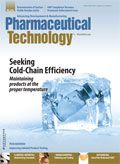Tracking Growth in Biologics
The share of biologic-based drugs in the global pharmaceutical market is on the rise.
Although small molecules dominate the global pharmaceutical market, the percentage share of biologic-based drugs is projected to rise reflecting both the entry of new biologic-based drugs and increased revenues for existing biologics.
Following several years of slowing growth, the global market for medicines is expected to rebound from a projected low of 3–4% growth in 2012 to 5–7% growth in 2016, according to a July 2012 analysis by the IMS Institute for Healthcare Informatics. Growth will primarily be from emerging markets as growth in established markets in the United States, Western Europe, and Japan remains weak comparative to historical levels. Overall, annual global spending on medicines will rise from $956 billion in 2011 to $1 trillion by 2013, to nearly $1.2 trillion in 2016, representing a compound annual growth rate of 3–6%.
Biologics are expected to account for approximately 17% of total global spending on medicines by 2016 and reach an overall market value of $200 billion to $210 billion in 2016, up from $157 billion in 2011, according to IMS. Seven of the top 10 global medicines by spending will be a biologic within five years, according to IMS. Adoption of biosimilars as low-cost alternatives to original biologic medicines will remain limited as biologics remain protected by patents or market exclusivity in many countries. The global market for biosimilars is expected to be between $4 billion and $6 billion in 2016, representing 2% of biologics spending. In 2011, the global biosimilars market was estimated at $693 million, or only 0.4% of the global biologics market, according to IMS.
New biologics gain US approval
In 2012, FDA's Center for Drug Research and Evaluation approved several new biologic license applications (BLAs) (see Table I). Roche/Genentech received approval for Perjeta (pertuzumab), a HER2/neu receptor antagonist indicated in combination with trastuzumab and docetaxel for treating patients with HER2-positive metastatic breast cancer. Sanofi received approval for Zaltrap (ziv-aflibercept), a recombinant fusion protein, which acts as a soluble receptor that binds to vascular endothelial growth factor-A (VEGF-A), VEGF-B, and placental growth factor and is used to treat metastatic colorectal cancer. Sanofi partnered with the biopharmaceutical company Regeneron Pharmaceuticals for Zaltrap. Also, the generic-drug company Teva received approval for tbo-filgrastim, which was approved as an original BLA and not as a biosimiliar to Amgen's Neupogen (filgrastim), which is a previously approved biologic. Tbo-filgrastim is a human granulocyte colony-stimulating factor produced by recombinant DNA technology and is used to reduce neutropenia in patients with non-myeloid malignancies.

Table I: Approvals of new biologic license applications (BLA) in 2012 by FDA’s Center for Drug Evaluation and Research.
Also, GlaxoSmithKline received FDA approval for raxibacumab, a monoclonal antibody to treat inhalational anthrax. Raxibacumab was developed by Human Genome Sciences (HGS) in conjunction with the Biomedical Advanced Research and Development Authority of the Office of the Assistant Secretary for Preparedness and Response, US Department of Health and Human Services. HGS was acquired by GSK in July 2012. ThromboGenics received FDA approval for Jetrea (ocriplasmin) for treating vitreomacular adhesion. Alcon, a division of Novartis, acquired the rights to commercialize Jetrea outside the United States in March 2012; ThromboGenics retains US rights.
Patricia Van Arnum is executive editor of Pharmaceutical Technology, pvanarnum@advanstar.com

Drug Solutions Podcast: A Closer Look at mRNA in Oncology and Vaccines
April 30th 2024In this episode fo the Drug Solutions Podcast, etherna’s vice-president of Technology and Innovation, Stefaan De Koker, discusses the merits and challenges of using mRNA as the foundation for therapeutics in oncology as well as for vaccines.